
Freemasonry or Masonry refers to fraternal organisations guilds of stonemasons that, from the end of the 14th century, regulated the qualifications of stonemasons and their interaction with authorities and clients. Modern Freemasonry broadly consists of two main recognition groups: Regular Freemasonry, which insists that a volume of scripture be open in a working lodge, that every member professes belief in a Supreme Being, that no women be admitted, and that the discussion of religion and politics do not take place within the lodge; and Continental Freemasonry, which consists of the jurisdictions that have removed some, or all, of these restrictions.
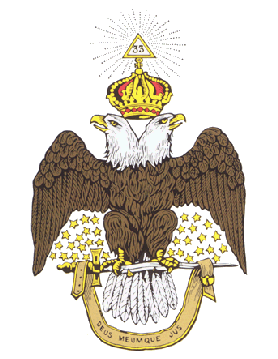
The Ancient and Accepted Scottish Rite of Freemasonry is a full-fledged Rite within the broader context of Freemasonry. It is the most widely practiced Rite in the world, spanning from the Blue Lodge level, and is sometimes designated as a concordant body due to its relationship with the degrees of Symbolic (Craft) Freemasonry. In contrast to being an appendant body, the Scottish Rite operates as a complete Rite in itself. Its structure includes the first three degrees, administered by various Masonic organizations or bodies. Each such body is governed by its own central authority. In the Scottish Rite, the central authority consists of a Grand Lodge overseeing the 1st to 3rd degrees, and a Supreme Council overseeing the 4th to 33rd degrees. The Droit Humain is an exception, as it maintains a consistent central authority from the 1st to the 33rd degree.
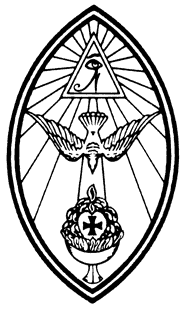
Ordo Templi Orientis is an occult secret society and hermetic magical organization founded at the beginning of the 20th century. The origins of O.T.O. can be traced back to the German-speaking occultists Carl Kellner, Theodor Reuss, Heinrich Klein, and Franz Hartmann. In its first incarnation, O.T.O. was intended to be modelled after and associated with European Freemasonry and as such in its early years only Freemasons could seek admittance.
The history of Freemasonry encompasses the origins, evolution and defining events of the fraternal organisation known as Freemasonry. It covers three phases. Firstly, the emergence of organised lodges of operative masons during the Middle Ages, then the admission of lay members as "accepted" or "speculative" masons, and finally the evolution of purely speculative lodges, and the emergence of Grand Lodges to govern them. The watershed in this process is generally taken to be the formation of the first Grand Lodge in London in 1717. The two difficulties facing historians are the paucity of written material, even down to the 19th century, and the misinformation generated by masons and non-masons alike from the earliest years.
In Freemasonry, regularity is one of the factors by which individual Grand Lodges judge whether to recognise one another for the purposes of allowing formal interaction at the Grand Lodge level and visitation by members of other jurisdictions. Each individual Grand Lodge determines which other Grand Lodges it considers Regular.

Carl Kellner was a chemist, inventor, and industrialist. Born in Vienna, Austria, he made significant improvements to the sulfite process and was co-inventor of the Castner-Kellner process.
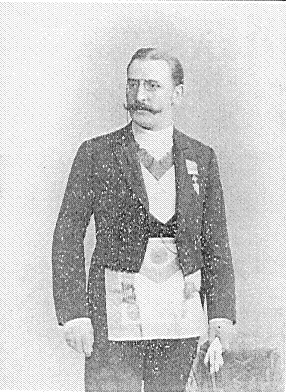
Albert Karl Theodor Reuss also known by his neo-Gnostic bishop title of Carolus Albertus Theodorus Peregrinus was a German tantric occultist, freemason, journalist, singer and head of Ordo Templi Orientis.

The Knights Templar, full name The United Religious, Military and Masonic Orders of the Temple and of St John of Jerusalem, Palestine, Rhodes and Malta, is a fraternal order affiliated with Freemasonry. Unlike the initial degrees conferred in a regular Masonic Lodge, which only require a belief in a Supreme Being regardless of religious affiliation, the Knights Templar is one of several additional Masonic Orders in which membership is open only to Freemasons who profess a belief in Christianity. One of the obligations entrants to the order are required to declare is to protect and defend the Christian faith. The word "United" in its full title indicates that more than one historical tradition and more than one actual order are jointly controlled within this system. The individual orders 'united' within this system are principally the Knights of the Temple, the Knights of Malta, the Knights of St Paul, and only within the York Rite, the Knights of the Red Cross.

The Ancient and Primitive Rite of Memphis-Misraïm is a masonic rite founded in Naples, Italy in September 1881 by the merger of two older rites; the Rite of Misraïm and the Rite of Memphis, both founded in the 18th century. The system is sometimes known as "Egyptian Freemasonry" due to the invocation of hermetic-derived esoteric symbolism referencing Ancient Egypt in its system of degrees.
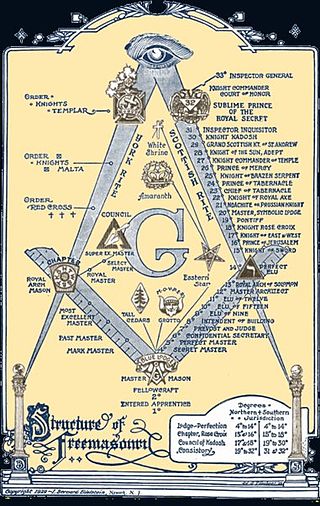
There are many organisations and orders which form part of the widespread fraternity of Freemasonry, each having its own structure and terminology. Collectively these may be referred to as Masonic bodies, Masonic orders, Concordant bodies or appendant bodies of Freemasonry.

John Yarker was an English Freemason, author, and occultist. He was born in Swindale, Shap, Westmorland, in the north of England. He moved with his parents to Lancashire and on to Manchester in 1849. Ηe was descended from Reinhold Yarker de Laybourne who lived in the mid 17th century.
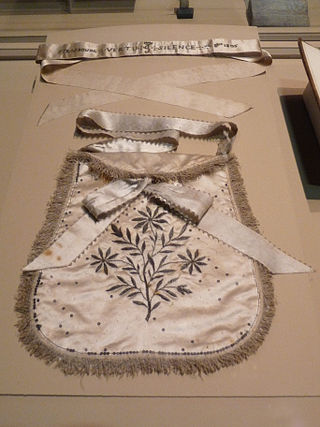
Freemasonry has had a complex relationship with women for centuries. A few women were involved in Freemasonry before the 18th century, despite de jure prohibitions in the Premier Grand Lodge of England.
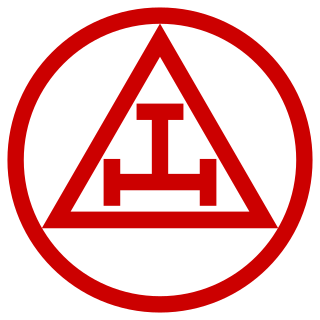
The Royal Arch is a degree of Freemasonry. The Royal Arch is present in all main masonic systems, though in some it is worked as part of Craft ('mainstream') Freemasonry, and in others in an appendant ('additional') order. Royal Arch Masons meet as a Chapter; in the Supreme Order of the Royal Arch as practised in the British Isles, much of Europe and the Commonwealth, Chapters confer the single degree of Royal Arch Mason.

Royal Arch Masonry is the first part of the American York Rite system of Masonic degrees. Royal Arch Masons meet as a Chapter, and the Royal Arch Chapter confers four degrees: Mark Master Mason, Past Master, Most Excellent Master, and Royal Arch Mason.
Sebastiano Caracciolo (1922–2013) was an important Mason and Martinist. He served as a member of the administration of the Masonic order Le Droit Humain in Italy, but later devoted himself to the Misraim - Memphis Rite. In 1981 he became the Sovereign Grand General Hierophant of the Ancient and Primitive Oriental Rite of Misraim and Memphis succeeding Gastone Ventura.

The Order of Knight-Masons Elect Priests of the Universe or simply Élus Coëns, was a theurgical organisation founded by Martinez de Pasqually. It appeared in France in the second half of the 18th century and is the first branch of Martinist tradition, otherwise known as Martinezism.

Universal Co-Masonry, is an international fraternal Masonic organization headquartered in Larkspur, Colorado. Formally a national Federation of Le Droit Humain, the international order of mixed co-freemasonry, Universal Co-Masonry split off in 1994 to become an independent masonic obedience. The organization seeks to “combat ignorance in all its forms” and works “to the Glory of God and the Perfection of Humanity”. Universal Co-Masonry has created “a Masonic Government that ensures the maximum liberty compatible with a voluntarily accepted discipline and is organized upon the precepts of the Ancient Mystery Schools, the Scottish Rite, and the English Rite”. Universal Co-Masonry is active in North America, South America, and the Philippines. Universal Co-Masonry also oversees the administration of the Masonic Philosophical Society, a philosophical discussion and educational society that meets online and in several countries.
Marco Egidio Allegri (1897–1949) was an Italian esotericist. He is best known for his closeness to Gabriele D'Annunzio, with whom he was one of the protagonists of the "Fiume endeavour" which led to the Italian Regency of Carnaro.

In Freemasonry, the first three Masonic degrees constitute the fundamental degrees in all Rites they are called Blue Lodge of Craft degree.
















